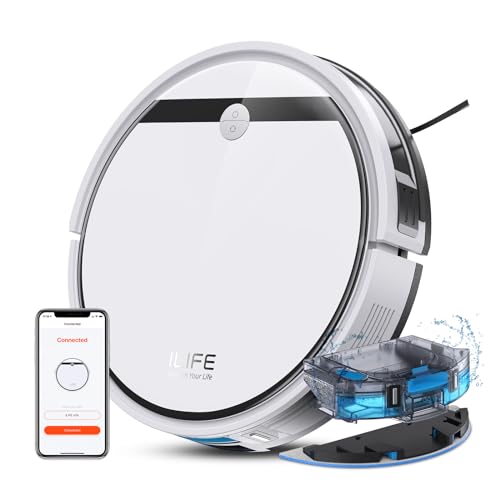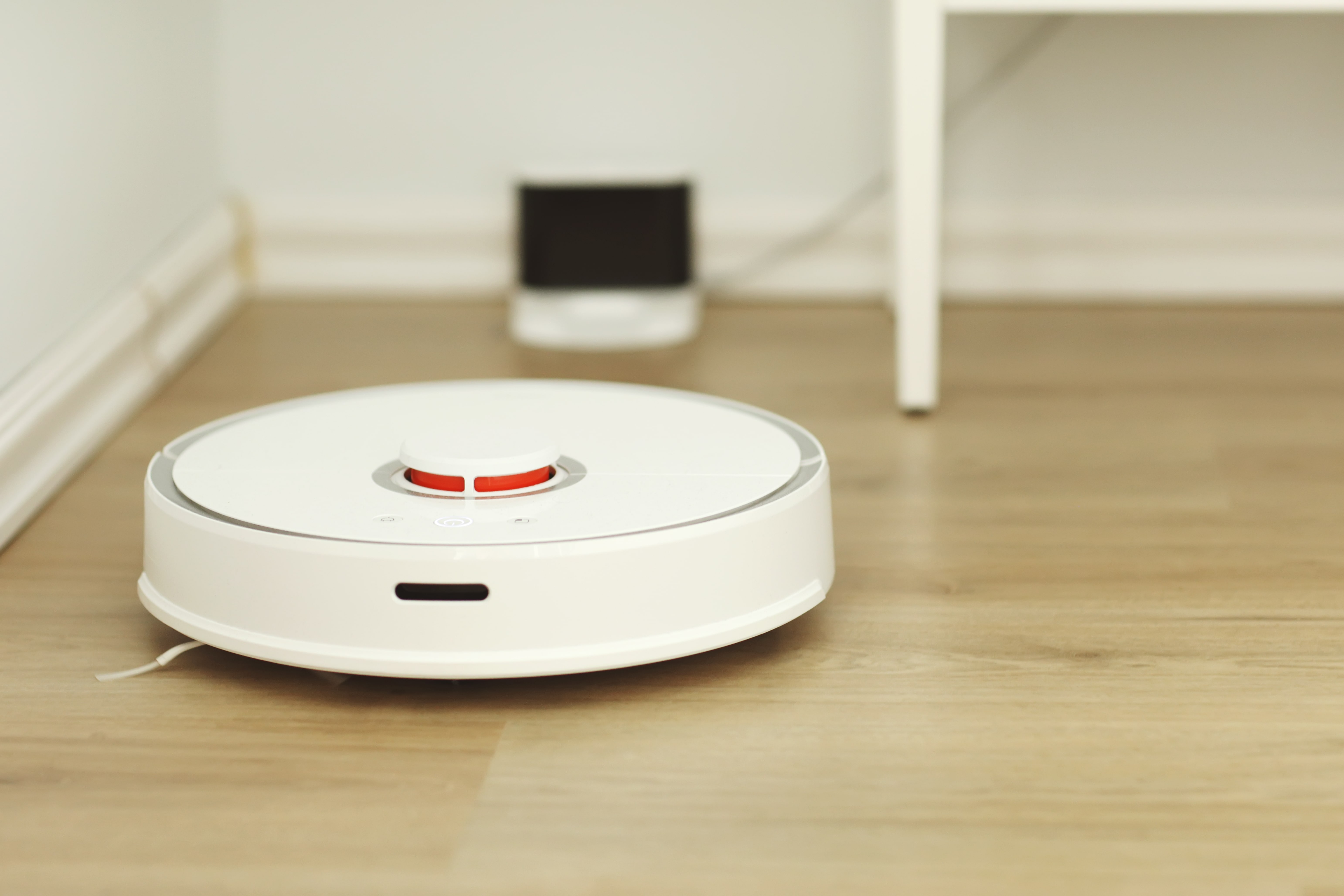 The Best Robot Vacuum 2023
The Best Robot Vacuum 2023
 Robot vacuums can help you clean your floors more easily. The best robot vacuums can clean up dirt, crumbs, pet hair, and much more.
Robot vacuums can help you clean your floors more easily. The best robot vacuums can clean up dirt, crumbs, pet hair, and much more.
While they can’t perform like a regular vacuum cleaner, they’ve improved a lot in the last few years. They’re smarter, more powerful and (marginally) better at avoiding chair legs.
Smart Mapping
Utilizing navigation tools such as lasers and sensors, robotic vacuum cleaners work their way through your home, sucking pet hair, crumbs, and dirt into their dustbins from hard floors like laminate, wood, and tile and also low-pile carpets and Dyson robot vacuum area rugs. The most sophisticated robots can map your house, so they can remember where they have been and avoid hitting obstacles like chairs, sofas and bookshelves that you might want to keep out of your way. You can also set up no-go areas using your smartphone to alert your dreame robot vacuum to stay clear of areas you don’t want it to be able to keep.
Robots with advanced mapping abilities, such as the Roomba J7, utilize an the onboard camera and processor-powered intelligence to avoid and detect obstacles. This means you can let it to do an effective cleaning without having to constantly monitor the state of your floorplan or manually move obstacles out of the robot’s path. The TP Link Tapo RV30 Plus is a robotic device that combine vacuuming and mopping. It’s a single-stop solution to keep your home clean. It has a great suction and works with Alexa or Google Assistant. It has a self-emptying function and can also function as a surveillance camera.
Roborock Q Revo, a cheaper robot that vacuums, mop and can be used as a robotic trashcan is a great choice for homes that do not require for more advanced features. However, it has some limitations in comparison to the Roomba S8 and J7. For instance, it uses a single rubber brush instead of the dual roller brushes of the other, so it might not be as effective in cleaning up larger particles such as shoes and socks. Also, it doesn’t include AI obstacle avoidance, so you might need to get rid of clutter prior to running it.
The iLife A4s Pro is a basic robot that’s ideal for those who prioritize simplicity and competence. It costs less than $200 and provides strong, consistent suction on hardwood as well as low-pile rug, while avoiding tangles. It’s not the most advanced however, it’s effective. It also works with voice commands. It can be set up to run a program, or create zones that are not allowed to be used using the app.
Object Detection
Object-avoidance technology can make or break the ability of a robot vacuum to navigate your home. Some of the models we’ve reviewed contain sensors (or even cameras) that allow your robot cleaner to avoid common traps for robots, such as cords, toys for children and pet spills. iRobot Roomba j7, one of the most impressive examples of smart technology in action, is a fantastic example. It also comes with a sleek base that automatically empties the trash bin so that you don’t need to.
During testing we set up the robotic cleaner in a home with a large size and were impressed with how quickly and thoroughly the floors were cleaned without getting sluggish. It’s extremely maneuverable and can reach areas that stand-up vacuums can’t, such as under beds and couches. It also has great suction, a massive 500 ml dustbin, and an over two-hour runtime. It isn’t able to set up no-go zones, and its object recognition is a bit hit-or-miss. We noticed it bumping into things on occasion during our tests, resulting in some vessels falling over.
It’s important to remember that despite how smart a robot vacuum may be, it won’t completely replace your upright or canister vacuum. It won’t be able to clean carpets that have been heavily soiled. It’s not able to reach ceilings or other difficult-to-reach areas. However, to keep your floors free of crumbs, pet hair and other particles, it can be an ideal addition to your cleaning routine.
Sensors are integrated into most robot vacuums to assist them navigate around stairs and obstacles. They can sense when they are about to fall down the stairs, for instance and also detect cluttered spaces and move around them. However, if you’re not vigilant the robo-cleaner may get stuck on a cord or stray shoe and require help.
Some smarter robot vacuums have mapping capabilities that allow them to design an outline of your home and then locate themselves within it. They can then know what areas they have cleaned and reduce time by not having to go over the same spots. It also lets them continue where they left off if they need to return to their charging dock.
Self-Emptying
A vacuum cleaner that automatically empties its bin of dust when it’s full is a great benefit. Some models even have windows to let you know when the bin has to be empty. This is an excellent feature for those with pets or children who tend to make more mess than adults.
The majority of robot vacuums let you select which model can be operated with an app, a remote from your phone, or through voice commands. They also have a variety of digital functions, including scheduling and maintenance suggestions. You can program your robot to clean your house on an annual or a regular basis using the correct settings. You can also program the robot to map out and clean specific areas of your home.
The smartest robot vacuums that we’ve tested come with sensors and cameras which allow them to create maps for your home. You can save these maps within the robot’s app and use them to navigate through your home. Some of these systems even remember furniture placement and even note transitions from hard floors to carpet.
The most efficient smart vacuums help you save time by automatically mapping and cleaning entire homes and keeping detailed records of previous cleaning sessions. You can access the records using an app for your tablet or smartphone. Many of them can be linked to your smart speaker, so that you can control them via voice commands.
TP-Link Tapo RV30+ is self-emptying robotic that delivers great performance at a reasonable cost. It can clean floors and sweep up pet hair and other debris from low-pile and hardwood rugs. It’s not as sophisticated as the other robots we’ve reviewed, however it does its job very well.
The model’s tanks-like wheels allow it to glide over obstacles such as cords that are tangled and high transitions within rooms. It has a large bin that doesn’t need to be emptying manually and it can charge itself and continue cleaning when it is unable to continue cleaning. It’s more expensive than other robotic vacuums we’ve tried, however it has powerful suction with simple controls to deliver an excellent value.
Voice Control
The majority of Dyson robot vacuum vacuums can be controlled by a remote control or an app on a smartphone. Certain robot vacuums are controlled by voice commands via smart speakers such as Amazon Echo or Google Home. This is a great option when you have pets or children that could hinder your cleaning or if you’re tired to operate the robot manually.
Many models also come with an automatic mode that works without input from you. You can start the robot by pressing a button on the app or on the robot. The robots can be programmed to clean in accordance with an established schedule, making them ideal for people who just want to make a plan and forget.
Some of the more expensive models have an advanced feature that utilizes artificial intelligence to scan your home and detect obstacles. These models can identify things like furniture, stairs power cords, and even different types of flooring. This helps to avoid the dangers which is especially helpful in larger homes that have lots of rugs and other flooring materials that are difficult for robots that vacuum and mop to navigate.
Some robots are more basic in their ability to detect objects however, they still get the job done. The TP-Link Tapo RV30 Plus, for example is similar to WiFi routers, but it has the performance of a top-of-the-line bot. It is extremely suction-driven and is able to remove dirt and debris on hardwood floors and rugs with medium pile easily. Its short, squat-shaped side brushes are less likely to become stuck in stray shoes or cords, and its hybrid roller brush uses bristles and plastic rather than bristles in traditional form for a more thorough cleaning.
This model is more expensive than other robots in the middle-end, but it does everything you’d expect from a robot mop and vacuum. It can draw out a cleaning schedule and create one. It also has virtual zones to keep out of. It doesn’t have the same room-scanning feature and obstacle avoidance as the j7 or the s8.
